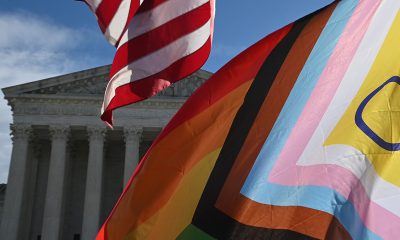Arts & Entertainment
Oprah’s gayest shows
Talk show legend never shied from LGBT topics. Her last episode aired on Wednesday.
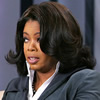
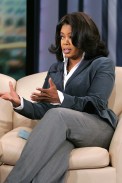
Oprah, even in her early years, never shied from LGBT topics on her eponymous show, which ended its run this week. (Photo courtesy of Harpo Productions)
Everybody knows Oprah ended her eponymous talk show this week, but one thing missed in the mainstream hoopla was how often and unabashedly she dealt with LGBT topics during her 25-year run.
Oprah and her flock have consistently denied speculation that she herself may be gay. Gay OWN talk show host Brad Lamm told the Blade in March the question has lingered so long he finds it “offensive.” Winfrey confessed frustration over the issue to Barbara Walters in a 2010 interview because its persistence, she said, implied dishonesty on her part.
A look back through the topics of the show’s 4,561 episodes reveals a bounty of LGBT guests, perhaps none more memorable than a 1987 landmark episode that found Oprah visiting Williamson, W.Va. (population: 5,600) to interview Mike Sisco, a gay man who’d contracted AIDS while living in Dallas and who’d returned home to his family in West Virginia.
Word had spread in the small town that Sisco had AIDS and hysteria ensued when he went swimming in a public swimming pool. Sisco told Oprah residents were fleeing “like people do in those science fiction movies when they see Godzilla in the street or something.” The mayor closed the pool and Sisco was ostracized.
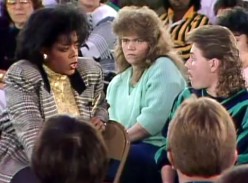
Oprah interviews the late Mike Sisco in his hometown of Williamson, W.Va., in 1987. Sisco, who was gay and had AIDS, caused hysteria by swimming in a public pool. (Photo courtesy of Harpo Productions)
It was the height of AIDS hysteria when confusion about how the disease could be contracted was at its peak. Sisco said he agreed to do the show to help educate the public. Rumors were running rampant in the town that Sisco had been seen spitting on food at the local McDonald’s and on produce at a grocery store.
“Mike Sisco’s story is heartbreaking because it shows the reactions/actions of human beings when fear takes hold, when ignorance is abundant and when there is a mob mentality,” blogger Lola Nicole wrote. “[He] went to be with his family so they could care for him, so he could feel loved. He got exactly the opposite.”
Last September, as Oprah started her final season, she visited Sisco’s three sisters, Patricia, Tina and Anna. Sisco died in 1996 and controversy surrounded him until the bitter end — a family fight ensued about where he could be buried. In the ensuing years, his sister Anna had come out as a lesbian.
Oprah also interviewed several of the residents who’d been against Sisco’s presence in the original episode. Some said they’d wished they’d been more compassionate.
Oprah said her goal in doing both episodes was to remind people to be compassionate.
“I think that is the complete message of this whole series we did here today and 23 years ago,” she said at a press conference after the 2010 episode. “I understand people’s fear because in 1987 we still didn’t know everything and it’s understandable that people would have questions and what was represented here in Williamson really was a microcosm for the country. We used Williamson as a symbol for what was going on in the rest of the country.”
Other famous LGBT-related episodes include:
- Gay pianist Liberace made his final public appearance on the show on a Christmas Day episode in 1986. He died about six weeks later of AIDS-related complications.
- Ellen DeGeneres came out on a 1997 episode. Oprah also appeared on her sitcom as her therapist.
- A 2003 episode that had run without incident initially, was rerun in 2005 and caused a major controversy because a guest gave an explanation of rimming, albeit in a hetero context.
- A landmark 2004 episode called “A Secret Sex World: Living on the Down Low” brought the largely black phenomenon of married men having sex with men on the side to light. It became part of the national lexicon.
- Last November, singer Ricky Martin discussed being a gay father.
- In March, “Family Ties” actress Meredith Baxter discussed being a lesbian.
- A January episode was devoted to coming out.
- In May, 2008, Oprah interviewed Cher and Tina Turner at Caesar’s Palace in Las Vegas. Oprah idol Diana Ross also made a handful of appearances on the show.
- An October 2006 episode was called “Wives Confess They are Gay.”
- A March, 2009 episode was called “Women Leaving Men for Other Women.”
- The “Will & Grace” cast convened in May 2006 for a farewell episode.
- In July, 2010 former high school football quarterback Kimberly Reed discussed her late ‘90s sex change. Her documentary was shown at Reel Affirmations.
- And just weeks ago, Oprah interviewed Chaz Bono about his transition and new documentary and book.
Movies
Superb direction, performances create a ‘Day’ to remember
A rich cinematic tapestry with deep observations about art, life, friendship

According to writer/director Ira Sachs, “Peter Hujar’s Day” is “a film about what it is to be an artist among artists in a city where no one was making any money.” At least, that’s what Sachs – an Indie filmmaker who has been exploring his identities as both a gay and Jewish man onscreen since his 1997 debut effort, “The Delta” – told IndieWire, with tongue no doubt firmly planted in cheek, in an interview last year.
Certainly, money is a concern in his latest effort – which re-enacts a 1974 interview between photographer Peter Hujar (Ben Whishaw) and writer Linda Rosenkrantz (Rebecca Hall), as part of an intended book documenting artists over a single 24-hour period in their lives – and is much on the mind of its titular character as he dutifully (and with meticulous detail) recounts the events of his previous day during the course of the movie. To say it is the whole point, though, is clearly an overstatement. Indeed, hearing discussions today of prices from 1974 – when the notion of paying more than $7 for Chinese takeout in New York City seemed outrageous – might almost be described as little more than comic relief.
Adapted from a real-life interview with Hujar, which Rosenkrantz published as a stand-alone piece in 2021 (her intended book had been abandoned) after a transcript was discovered in the late photographer’s archives, “Peter Hujar’s Day” inevitably delivers insights on its subject – a deeply influential figure in New York culture of the seventies and eighties, who would go on to document the scourge of AIDS until he died from it himself, in 1987. There’s no plot, really, except for the recalled narrative itself, which involves an early meeting with a French journalist (who is picking up Hujar’s images of model Lauren Hutton), an afternoon photo shoot with iconic queer “Beat Generation” poet/activist Allen Ginsburg, and an evening of mundane social interaction over the aforementioned Chinese food. Yet it’s through this formalized structure – the agreed-upon relation of a sequence of events, with the thoughts, observations, and reflections that come with them – that the true substance shines through.
In relaying his narrative, Hujar exhibits the kind of uncompromising – and slavishly precise – devotion to detail that also informed his work as a photographer; a mundane chronology of events reveals a universe of thought, perception, and philosophy of which most of us might be unaware while they were happening. Yet he and Rosenkrantz (at least in Sachs’ reconstruction of their conversation) are both artists who are keenly aware of such things; after all, it’s this glimpse of an “inner life,” of which we are rarely cognizant in the moment, that was/is their stock-in-trade. It’s the stuff we don’t think of while we’re living our lives: the associations, the judgments, the selective importance with which we assign each aspect of our experiences, that later become a window into our souls – if we take the opportunity to look through it. And while the revelations that come may occasionally paint them in a less-than-idealized light (especially Hujar, whose preoccupations with status, reputation, appearances, and yes, money, often emerge as he discusses the encounter with Ginsberg and his other interactions), they never feel like definitive interpretations of character; rather, they’re just fleeting moments among all the others, temporary reflections in the ever-ongoing evolution of a lifetime.
Needless to say, perhaps, “Peter Hujar’s Day” is not the kind of movie that will be a crowd-pleaser for everyone. Like Louis Malle’s equally acclaimed-and-notorious “My Dinner With Andre” from 1981, it’s essentially an action-free narrative comprised entirely of a conversation between two people; nothing really happens, per se, except for what we hear described in Hujar’s description of his day, and even that is more or less devoid of any real dramatic weight. But for those with the taste for such an intellectual exercise, it’s a rich and complex cinematic tapestry that rewards our patience with a trove of deep observations about art, life, and friendship – indeed, while its focus is ostensibly on Hujar’s “day,” the deep and intimate love between he and Rosenkrantz underscores everything that we see, arguably landing with a much deeper resonance than anything that is ever spoken out loud during the course of the film – and never permits our attention to flag for even a moment.
Shooting his movie in a deliberately self-referential style, Sachs weaves the cinematic process of recreating the interview into the recreation itself, bridging mediums and blurring lines of reality to create a filmed meditation that mirrors the inherent artifice of Rosenkrantz’s original concept, yet honors the material’s nearly slavish devotion to the mundane minutiae that makes up daily life, even for artists. This is especially true for both Hujar and Rosenkrantz, whose work hinges so directly to the experience of the moment – in photography, the entire end product is tied to the immediacy of a single, captured fragment of existence, and it is no less so for a writer attempting to create a portrait (of sorts) composed entirely of fleeting words and memories. Such intangibles can often feel remote or even superficial without further reflection, and the fact that Sachs is able to reveal a deeper world beyond that surface speaks volumes to his own abilities as an artist, which he deploys with a sure hand to turn a potentially stagnant 75 minutes of film into something hypnotic.
Of course, he could not accomplish that feat without his actors. Whishaw, who has proven his gifts and versatility in an array of film work including not only “art films” like this one but roles from the voice of Paddington Bear to “Q” in the Daniel Craig-led “James Bond” films, delivers a stunning performance, carrying at least 75% of the film’s dialogue with the same kind of casual, in-the-moment authenticity as one might expect at a dinner party with friends; and though Hall has less speaking to do, she makes up for it in sheer presence, lending a palpable sense of respect, love, and adoration to Rosenkrantz’s relationship with Hujar.
In fact, by the time the final credits role, it’s that relationship that arguably leaves the deepest impression on us; though these two people converse about the “hoi polloi” of New York, dropping legendary names and reminding us with every word of their importance in the interwoven cultural landscape – evoked with the casual air of everyday routine before it becomes cemented as history – of their era, it’s the tangible, intimate friendship they share that sticks with us, and ultimately feels more important than any of the rest of it. For all its trappings of artistic style, form, and retrospective cultural commentary, it’s this simple, deeply human element that seems to matter the most – and that’s why it all works, in the end. None of its insights or observations would land without that simple-but-crucial link to humanity.
Fortunately, its director and stars understand this perfectly, and that’s why “Peter Hujar’s Day” has an appeal that transcends its rarified portrait of time, place, and personality. It recognizes that it’s what can be read between the lines of our lives that matters, and that’s an insight that’s often lost in the whirlwind of our quotidian existence.
Out & About
Gala Hispanic Theatre’s Flamenco Festival returns

Gala Hispanic Theater will host the 21st Annual “Fuego Flamenco Festival” from Thursday, Nov. 6 to Saturday, Nov. 22.
The festival will feature American and international artists who will gather in the nation’s capital to celebrate the art of Flamenco. Guests can save 20% on tickets with a festival pass.
The festival kicks off now through Nov. 10 with the D.C. premiere of Crónica de un suceso, created, choreographed and performed by Rafael Ramírez from Spain, accompanied by renowned flamenco singers and musicians. In this new show, Ramírez pays homage to the iconic Spanish Flamenco artist Antonio Gades who paved the way for what Flamenco is today. GALA’s engagement is part of an eight-city tour of the U.S. by Ramírez and company.
The magic continues Nov. 14-16 with the re-staging of the masterpiece Enredo by Flamenco Aparicio Dance Company, a reflection of the dual nature of the human experience, individual and social, which premiered at GALA in 2023.
For more information, visit the theatre’s website.
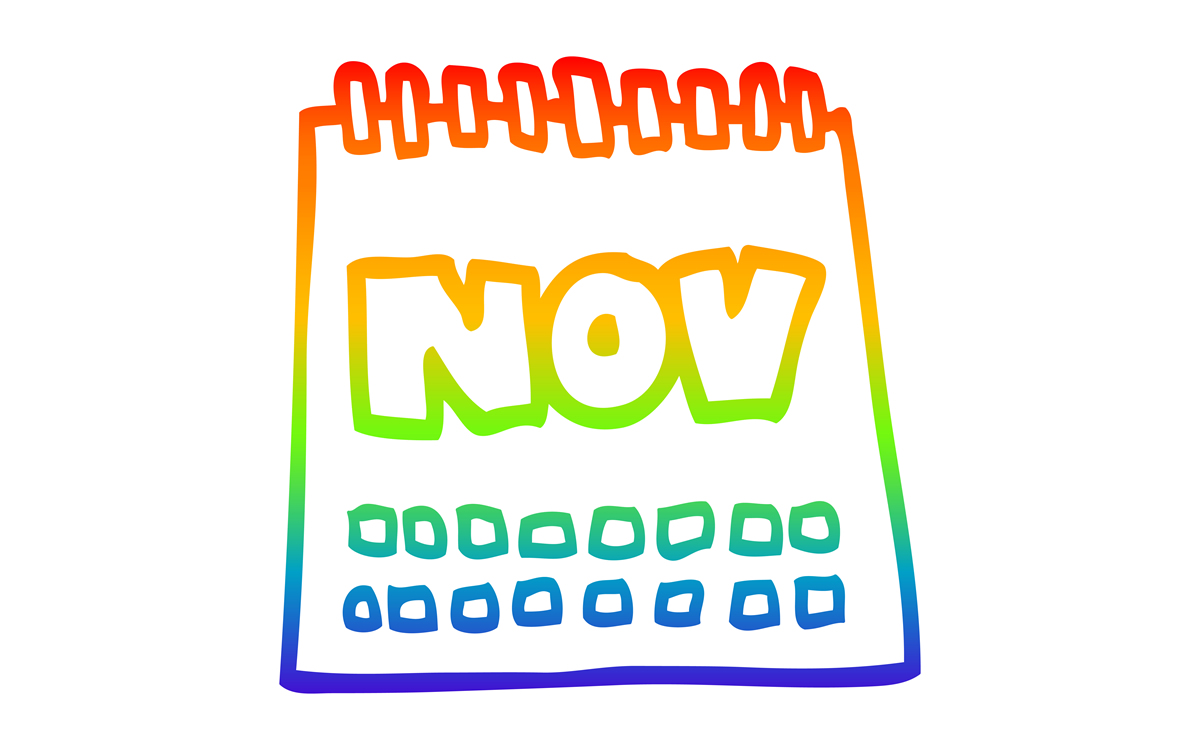
Friday, November 7
“Center Aging Friday Tea Time” will be at 12 p.m. in person at the DC Center for the LGBT Community’s new location at 1827 Wiltberger St., N.W. To RSVP, visit the DC Center’s website or email [email protected].
Go Gay DC will host “LGBTQ+ Community Social” at 7 p.m. at Silver Diner Ballston. This event is ideal for making new friends, professional networking, idea-sharing, and community building. This event is free and more details are available on Eventbrite.
Saturday, November 8
Go Gay DC will host “LGBTQ+ Community Brunch” at 12 p.m. at Freddie’s Beach Bar & Restaurant. This fun weekly event brings the DMV area LGBTQ+ community, including allies, together for delicious food and conversation. Attendance is free and more details are available on Eventbrite.
Sunday Supper on Saturday will be at 2 p.m. at the DC Center for the LGBT Community. This event will be full of food, laughter and community. For more information, email [email protected].
Monday, November 10
“Center Aging: Monday Coffee Klatch” will be at 10 a.m. on Zoom. This is a social hour for older LGBTQ adults. Guests are encouraged to bring a beverage of choice. For more information, contact Adam ([email protected]).
“Soulfully Queer: LGBTQ+ Emotional Health and Spirituality Drop-In” will be at 3 p.m. at the DC Center for the LGBT Community. This group will meet weekly for eight weeks, providing a series of drop-in sessions designed to offer a safe, welcoming space for open and respectful conversation. Each session invites participants to explore themes of spirituality, identity, and belonging at their own pace, whether they attend regularly or drop in occasionally. For more details visit the DC Center’s website.
Genderqueer DC will be at 7 p.m. on Zoom. This is a support group for people who identify outside of the gender binary, whether you’re bigender, agender, genderfluid, or just know that you’re not 100% cis. For more details, visit genderqueerdc.org or Facebook.
Wednesday, November 12
Job Club will be at 6 p.m. on Zoom. This is a weekly job support program to help job entrants and seekers, including the long-term unemployed, improve self-confidence, motivation, resilience and productivity for effective job searches and networking — allowing participants to move away from being merely “applicants” toward being “candidates.” For more information, email [email protected] or visit thedccenter.org/careers.
“Gay Men Speed Dating” will be at 7 p.m. at Public Bar Live. This is a fresh alternative to speed dating and matchmaking in a relaxed environment. Tickets start at $37 and are available on Eventbrite.
Thursday, November 13
The DC Center’s Fresh Produce Program will be held all day at the DC Center for the LGBT Community. People will be informed on Wednesday at 5 p.m. if they are picked to receive a produce box. No proof of residency or income is required. For more information, email [email protected] or call 202-682-2245.
Virtual Yoga Class will be at 7 p.m. on Zoom. This is a free weekly class focusing on yoga, breathwork, and meditation. For more details, visit the DC Center for the LGBT Community’s website.
-

 District of Columbia3 days ago
District of Columbia3 days ago‘Sandwich guy’ not guilty in assault case
-

 Sports3 days ago
Sports3 days agoGay speedskater racing toward a more inclusive future in sports
-

 Michigan5 days ago
Michigan5 days agoFBI thwarts Halloween terror plot targeting Mich. LGBTQ bars
-

 New Jersey4 days ago
New Jersey4 days agoBlue wave hits Northeast: Sherrill and Mamdani lead Democratic comeback



